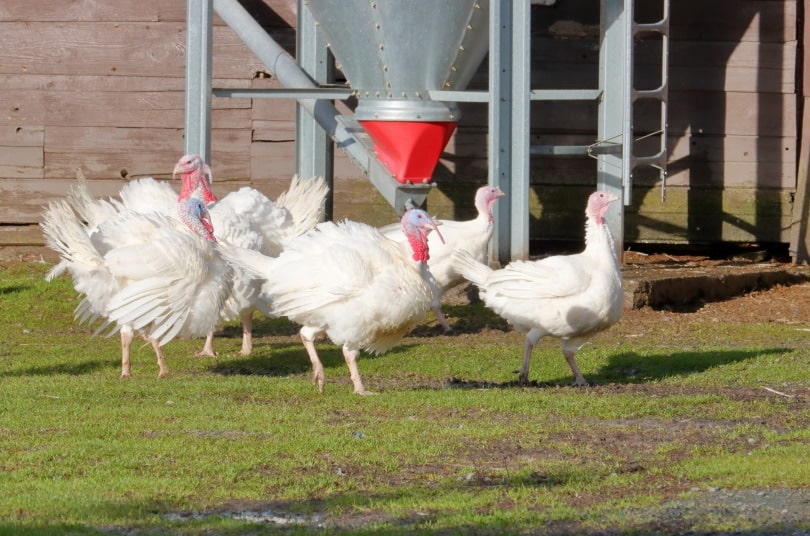The White Holland turkey is the most important white turkey throughout US history and one of the rarest birds in existence. With cross-breeding, the bird is difficult to authenticate as a pure White Holland, despite being the only commercial white variety available for the first half of the 1900s.

Quick Facts about White Holland Turkey
| Breed Name: | White Holland |
| Place of Origin: | United States |
| Uses: | Meat |
| Tom (Male) Size: | 35 lbs |
| Hen (Female) Size: | 19 lbs |
| Color: | White |
| Lifespan: | 10 years |
| Climate Tolerance: | All |
| Care Level: | Easy |
| Market Weight: | 16–25 lbs |
| Rarity: | Rare |
White Holland Turkey Origins
Despite its name, the White Holland turkey originated in the US in the 1800s and was recognized by the American Poultry Association in 1874. The breed was created from white sports of the Bronze turkey variety.
The white coloration is an ancient one, however. The Aztecs and other groups selectively bred turkeys for white, which were then sent to Europe. European breeders favored white turkeys and continued to selectively breed them.
Producers wanted a combination of a large, white-feathered bird with early maturity and a clean carcass. In the 1950s, researchers at Cornell University began breeding the White Holland with the broad-breasted Bronze, which then surpassed pure White Holland turkeys. The true White Holland turkey is rare and threatened, and the few that are shown reflect the genetic influence of the Large White breeding.
White Holland Turkey Characteristics
The White Holland turkey’s temperament is highly dependent on the breeder. Some breeders select turkeys for aggression, while others select for docility. Regardless of breeding, the White Holland is known for its hardiness and can weather nearly any climate.
Because they’re difficult to authenticate, the turkey may take on traits from the large white or Bronze in its lineage.
Uses
Though the White Holland hen can produce abundant, large egg clutches, this breed is primarily raised for meat. The toms are large and can be up to 35 pounds, yielding a market weight of 16 to 25 pounds. The breed is rare, however, and the meat is not widely available. Pure White Holland turkeys have clean carcasses compared to darker birds.
Appearance & Varieties
White Holland turkey is a stunning bird that’s often confused with the broad-breasted white turkey. They’re typically smaller than broad-breasted turkeys and have longer legs.
Their feathers are pure white, and their heads are red or blue with a black beard and a pink-colored beak. Their throats, wattles, shanks, and toes are pinkish-white, and their eyes are brown.
Population/Distribution/Habitat
White Holland turkeys are suitable for just about any climate. Their distribution spans Europe to the US, and they’re tolerant to extreme climates with the right husbandry. Overall, the breed is hardy and easier to care for than other breeds.
Are White Holland Turkeys Good for Small-Scale Farming?
Despite the rarity of White Holland turkeys, they’re popular for small-scale farming. They’re excellent for meat production, leading small-scale farmers to raise and breed them for commercial use.
Marketing the White Holland turkey is easy, due to the high demand and value for this rare breed. They’re also hardy and easy to care for and breed, making them a good choice for first-time poultry farmers.

Conclusion
White Holland turkeys are a unique heritage turkey variety that’s good for meat production and hobby breeding. This rare bird is a hardy farm bird that can be either aggressive or docile, depending on breeding, and yields a clean carcass.
Related bird reads:
Featured Image Credit: Eric Buermeyer, Shutterstock
